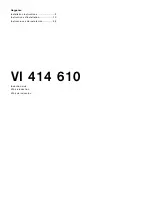
3
ft1 / ft1-t
325-360° F
400-450° F
total
(Top / Bottom)
5
(3 / 2)
8
(5 / 3)
ft3 / ft3-t
325-350° F
400-450° F
total
(Top / Bottom)
8
(5 / 3)
14
(9 / 5)
ft4.5 / ft4.5-t
325-350° F
400-450° F
total
(Top / Bottom)
15
(9 / 6)
21
(14 / 7)
ft6 / ft6-t
325-350° F
400-450° F
total
(Top / Bottom)
24
(14 / 10)
30
(20 / 10)
ft9 / ft9-t
325-350° F
400-450° F
total
(Top / Bottom)
24
(15 / 9)
30
(21 / 9)
ft12 / ft12-t
325-350° F
400-450° F
total
(Top / Bottom)
28
(17 / 11)
38
(25 / 13)
ft18 / ft18-t
325-350° F
400-450° F
total
(Top / Bottom)
32
(19 / 13)
42
28 / 14)
SEASONING
The patina (the protective layer of the cast iron
product) must be renewed when it is affected.
It can happen that your cast iron product starts
to rust here and there. In that case, proceed as
follows:
• Remove the rust with a wire brush. Clean
the cast iron product with warm water, dish
soap, and a dishwashing brush. Then dry it
thoroughly.
• Coat the whole cast iron product and the lid
(inner and outer surfaces) with a neutral oil, or
lard. Do not use any olive oil or others with a
lower smoke point, they burn out too quickly.
• Then place the cast iron product in a prehea-
ted oven at a temperature of approx. 350 °F
for 1 to 2 hours and then switch the oven off.
Open the oven door halfway and let the cast
iron product cool down completely.
Caution!
Burning the layer of oil or lard can produce
smoke. We recommend seasoning outside,
e.g. on an open fire or a grill.
• Grease all the parts again once they have
cooled down. Your cast iron product is now
seasoned.
HOW TO USE THE DUTCH OVEN
COOKING, FRYING, BAKING
You can use the Dutch Oven in your kitchen
oven as well as on a campfire or with a suitable
barbecue grill. The various heat sources such
as barbecue briquettes, charcoal, or campfire
embers do not necessarily reach the same
temperature.
ON A CAMPFIRE
When used on a campfire, you have several
options: Each type of wood creates different
embers and burns at a different rate. When you
place the Dutch Oven next to the fire, you can
cook many dishes with the heat that emanates
from the fire. It is essential to turn the Dutch
Oven regularly, so that it is evenly heated on all
sides.
WITH BRIQUETTES
High-quality briquettes are easy to use and
reliable. They have mostly a similar size and
they can store heat for a long time. It is the
easiest way for you to regulate the heat for your
Dutch Oven. The amount of briquettes that you
need under the Dutch Oven and on the lid also
depends on the cooking method. Here is a rule
of thumb for all Dutch Oven sizes:
• for simmering soups and stew: 1/3 of the
briquettes on the lid and 2/3 under the Dutch
Oven
• for baking bread and cakes: 2/3 of the briquet-
tes on the lid and 1/3 under the Dutch Oven.
This table offers you information on the amount
of briquettes needed depending on which
Dutch Oven you use. In this table you will find
the amount of briquettes and how you should
distribute them on and under the Dutch Oven
in order for your Dutch Oven to reach a certain
temperature.















